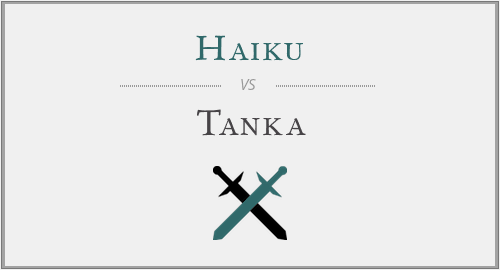
Poetry takes on many forms across the globe. Poems can rhyme, poems can flow without punctuation, poems can express or describe or inspire.
Both use precise detail in their descriptions.
Both types of poetry share many common rules. For example, the phrases are not intended to be read as a sentence, there are no capital letters used except in proper names and nouns.
Every word in a haiku or a tanga poem is carefully chosen and carries much importance. It is deceptively difficult to express images and ideas in such a minimal format.
What is a Haiku?
The haiku is a compact and powerful Japanese poem that originated in the 13th century; it is the shortest and one of the most well-known forms of Japanese poetry.
It is a form of poetry that does not rhyme. It is written in the present tense. It typically describes nature, emotions, and human consciousness.
In English, it is written in three horizontal lines, consisting of 17 syllables (“on” or “morae”), arranged in a 5 – 7 – 5 pattern.
a nature reference,
two images that are juxtaposed, and
a final line, a “cutting word” (“kireji”,) which pulls together the first two lines and closes the poem.
For example:
I am nobody:
A red sinking autumn sun
Took my name away.
RICHARD WRIGHT
What is a Tanka?
Like the haiku, the tanka is also a relatively short and compact Japanese poem form that originated in the 17th century. The tanka is the shortest form of poetry after the haiku.
It often uses personification, metaphors, and similes to turn the reader inward, and to provoke a focus on central human emotions and experiences.
In English, it is written in five horizontal lines, consisting of 31 syllables, arranged in a 5 – 7 – 5 – 7 - 7 pattern.
The first three lines of the tanka, called the “upper phrase” (“kami-no-ku”), are arranged in a 5 – 7 – 5 pattern which resembles the haiku poem in its structure. The “upper phrase” will often describe a thought or observation about the natural world.
The next two lines of the tanka, called the “lower phrase” (“shimo-no-ku”) are arranged in a 7 – 7 pattern and will often comment or summarize the observation of the “upper phrase.”
For example:
cold wind blows outside
light struck through my thoughts
once so bright now just shadows
JASON
Writing a haiku or a tanka poem can be inspiring and rewarding! All it requires is concentration and focus.
Choose a topic: use what comes to mind without judgement. At this stage, don’t worry about counting syllables or controlling the form. Carry a notebook and ask yourself questions:
• What are you observing?
• How are you feeling?
Convert your thoughts into images and symbols which capture the essence of your observations. Use details from all your senses.
Continue some of your sentence without pause from one line to the next, flowing the sentences around the ends of each line.
Use a variety or rhythms and word structures within the lines. Use different multi-syllabic words at the ends of the lines to create an interesting rhythm: do not end each line with a one-syllable word.
When Writing a Haiku
• Line 1: 5 syllables
• Line 2: 7 syllables
• Line 3: 5 syllables
For example:
the sun rose at dawn
warming the world with its light
though my bed was cold
TERI
When writing a Tanka:
• Line 1: 5 syllables
• Line 2: 7 syllables
• Line 3: 5 syllables
• Line 4: 7 syllables
• Line 5: 7 syllables
The first two lines will describe your experience. The third line will reflect on the first two lines. In the last two lines, reflect on the rest of the poem.
For example:
I fell in the lake
into the deepest black hole
I am silent now
without your touch and your look
I breath and I die
TERI
Conclusion
The modern-day haiku and tanka poems take many liberties with the traditional form. Nevertheless, the haiku and the tanka remain very special forms of poetry. When successful, their condensed, powerful form still touches our unconscious as well as our conscious awareness.
If you wish to read a haiku or a tanka poem, create an atmosphere conducive to thought and consideration. Slow yourself down into the rhythm of the poem. Read the poem more than once. Breathe and enjoy.
Useful Note: For a quick check to see if your poem follows the rules, try out this awesome haiku checker!




Have a discussion about this article with the community:
Report Comment
We're doing our best to make sure our content is useful, accurate and safe.
If by any chance you spot an inappropriate comment while navigating through our website please use this form to let us know, and we'll take care of it shortly.
Attachment
You need to be logged in to favorite.
Log In